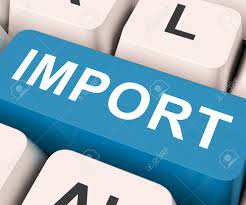VAT on import: Dutch legislation
When purchasing goods and services from other countries, you will face different VAT regulations then when you do business nationally. These regulations in regard to VAT on import are dependent on a number of factors. For example, there is a difference between trade with EU-countries and other countries, and the regulations for goods differ from those for services. Lexlupa helps you find your way in the complex field of policies around VAT and import in this article.

Import from an EU-country to The Netherlands
Do you buy goods from an EU-country that are shipped to the Netherlands (or another EU-country) and is the supplier an entrepreneur? Then you will receive an invoice with 0% VAT on import from the supplier in most cases. However, this does not mean that you do not need to pay VAT over the goods. The imported goods are taxed in the Netherlands with Dutch VAT. We call such shipments between EU-countries intra-community acquisitions.
What rate VAT on import?
When importing goods to the Netherlands, you will need to have a registration with the Dutch Tax Authorities. The VAT-number you receive, will need to be passed on to the supplier abroad. With that, the VAT can be extended from your supplier to you. The supplier can then send you an invoice free of VAT.
There are a few exceptions (see below) where the entrepreneur in a different EU-country will apply the VAT rate of 0%. As the purchaser you will need to calculate the usual VAT rate in the Netherlands for that invoice. This is usually 21%. To make sure you know under what VAT rates the goods and services you purchase falls, you can check this overview (in Dutch only).
Calculation example
The example below demonstrates how you can calculate the extended VAT for an intra-community shipment.
Suppose you import a shipment of computers from Germany and you get these shipped to your company in the Netherlands. You will need to pay Dutch VAT over the purchase price.
You will need to include the following on your VAT statement:
Intra-community acquisition (Computers) €5.000,-
VAT 21% €1.050
The amount of €1.050,- you can immediately deduct as preload. Ultimately you will not have to pay anything.
Exceptions
Although the process above is the most common when paying VAT over imported goods and supplies in the EU, it is important to determine if your specific case can make use of the exceptional regulation. When you import goods from one EU-country to another, you can use this tool (in Dutch only) to find out if, where and how much VAT you should charge. For services, you can find an overview here (also in Dutch) for exceptions to the reverse-charge regulations.
Transfer of own goods
When you have two or more companies in various EU-countries, transfers between your own companies can also be a matter of an intra-community shipment or acquisition of your own goods. Suppose that in the above-mentioned calculation example the company in Germany is also yours. Then in this case the shipment of computers are in storage in Germany and will be shipped to a store in the Netherlands where you will sell these computers. Then the situation will be as followed:
In Germany, it is a case of an intra-community shipment of your own goods.
In the Netherlands, it is a case of intra-community acquisition of your own goods.
You will need to declare this acquisition in the Netherlands and the VAT can be deducted as preload.
The numbers from the first example remain the same, as well as the processing of the transaction.
VAT on import from countries outside the EU
Unlike intra-community acquisitions, for invoices outside the EU, generally VAT is charged. You must pay VAT in the country from where you are importing. This means that you will also need to declare in the country from which you are buying. Normally you will do so with the custom agency where the goods are registered.
Licence article 23
In some cases your company can request the so-called licence article 23. With this licence you will not have to pay taxes at the custom agency, but you can simply state the VAT on your VAT statement. The licence article 23 can be requested in writing at the Tax Authorities. You can read more about this on the website of the Tax Authorities.
Further reading
Read more about the fiscal regulations regarding VAT and import on the website of the Tax Authorities. Or read this article about reverse-charging VAT. Are you exporting goods and services, and would you like to know more about the VAT regulation? Then you can read more here. If you are doing business between the UK and the EU, this article explains about the consequences of Brexit on trade and VAT on import.
